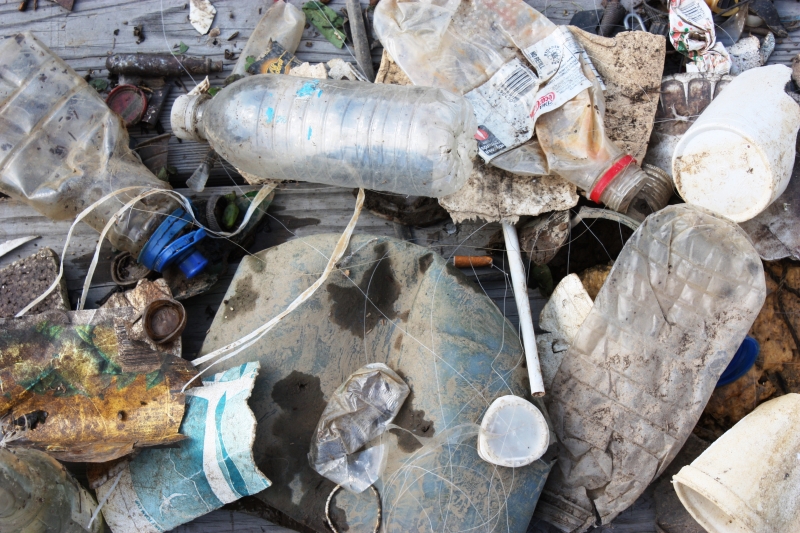Huge amounts of marine debris enter the ocean and Great Lakes every year, from large abandoned and derelict vessels and fishing gear, to plastic bottles, food wrappers, and other trash, and even tiny pieces of plastic that you can’t see with the human eye! But once our trash is in the ocean, what happens to it? How long does it last, and can we ever say that it’s gone? Unfortunately, when we talk about degradation rates, or the amount of time something takes to break down in the marine environment, the answer isn’t simple.
Marine debris is made up of many different types of human-made materials, including paper, metals, glass, textiles, and plastic. These materials break down in different ways, making it difficult for us to understand how long they will last once they get into our ocean or Great Lakes. Although you may hear that it takes hundreds of years for some items to degrade, there are many different factors that can cause an item to break down quickly, or not at all! For plastics, exposure to sunlight, water, microorganisms, such as bacteria, fungi, and algae, the temperature of the environment, the amount of oxygen, and the location of an item can all contribute to how marine debris breaks down.

It’s especially difficult to understand how human-made materials, such as plastics, degrade in the marine environment. Not all plastics are created the same, and the name “plastic” is used to describe a wide range of human-made polymers. These materials are used to make many different products, including food and beverage packaging, plastic bags, electronics, medical devices, car parts, appliances, and more. During manufacturing, chemicals (called additives) are added to plastics to give them different qualities, such as flexibility, bright colors, and resistance to sunlight and fire. Because plastics can come in so many different forms and with so many additives, it can be even more difficult to understand how long something made of plastic takes to degrade. In fact, some plastics may fragment into tinier and tinier pieces, and never fully go away.
Even plastics labeled as “bio-based” or “biodegradable” that may break down in industrial composting facilities, or under very specific conditions, are not designed to quickly break down in household compost piles, soil, or in aquatic environments. Plastics of all types, even those labelled as biodegradable, could stay in the ocean and Great Lakes for an indefinite amount of time.
